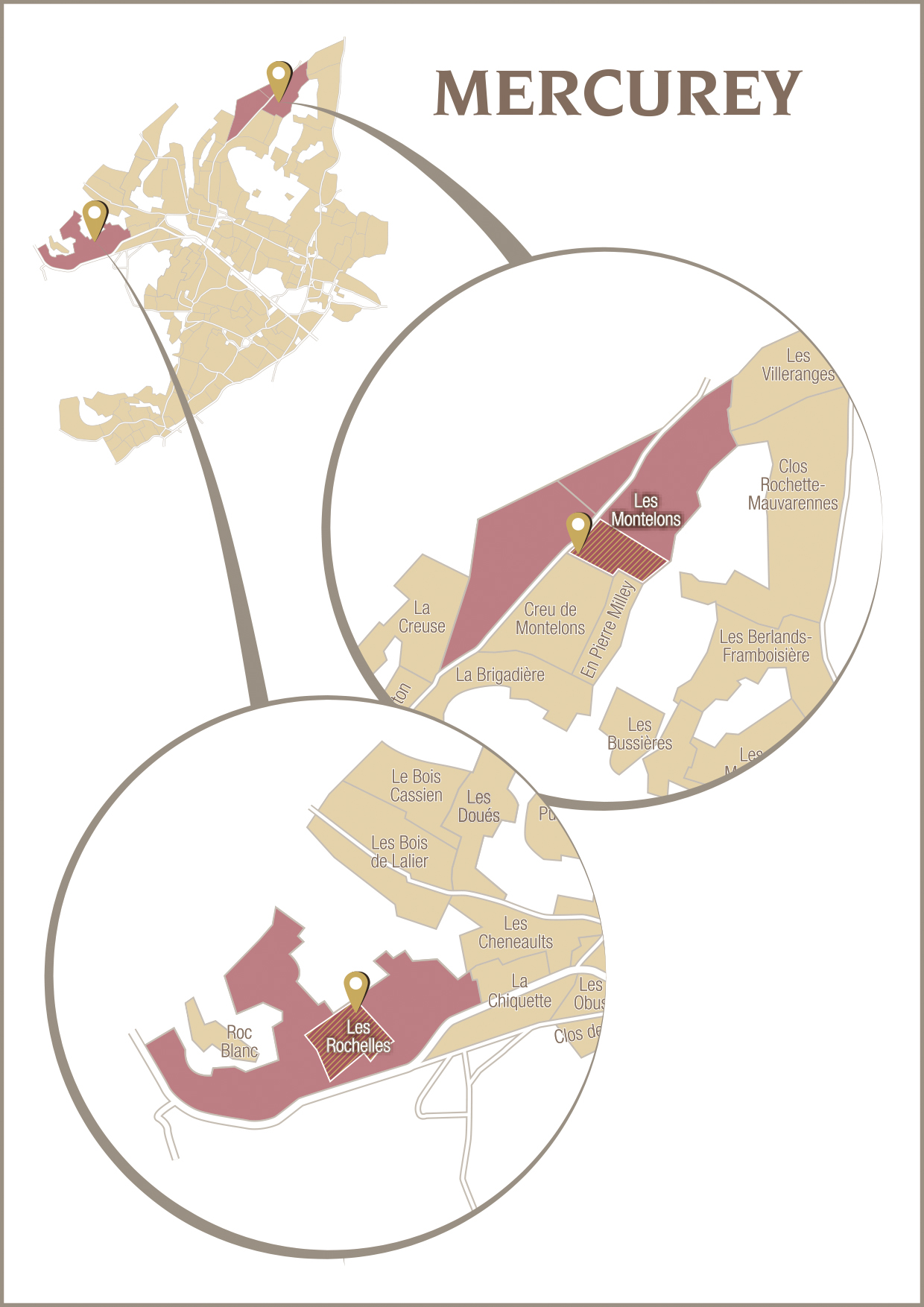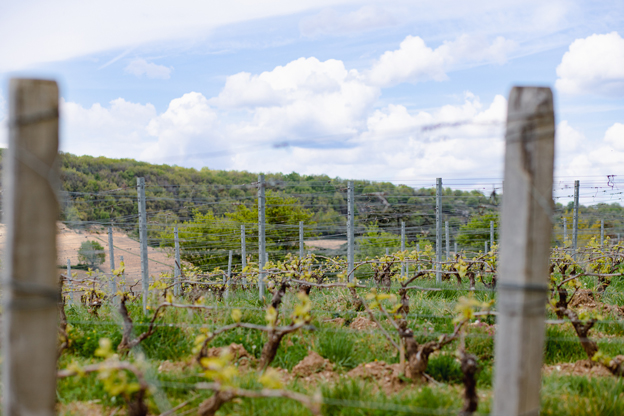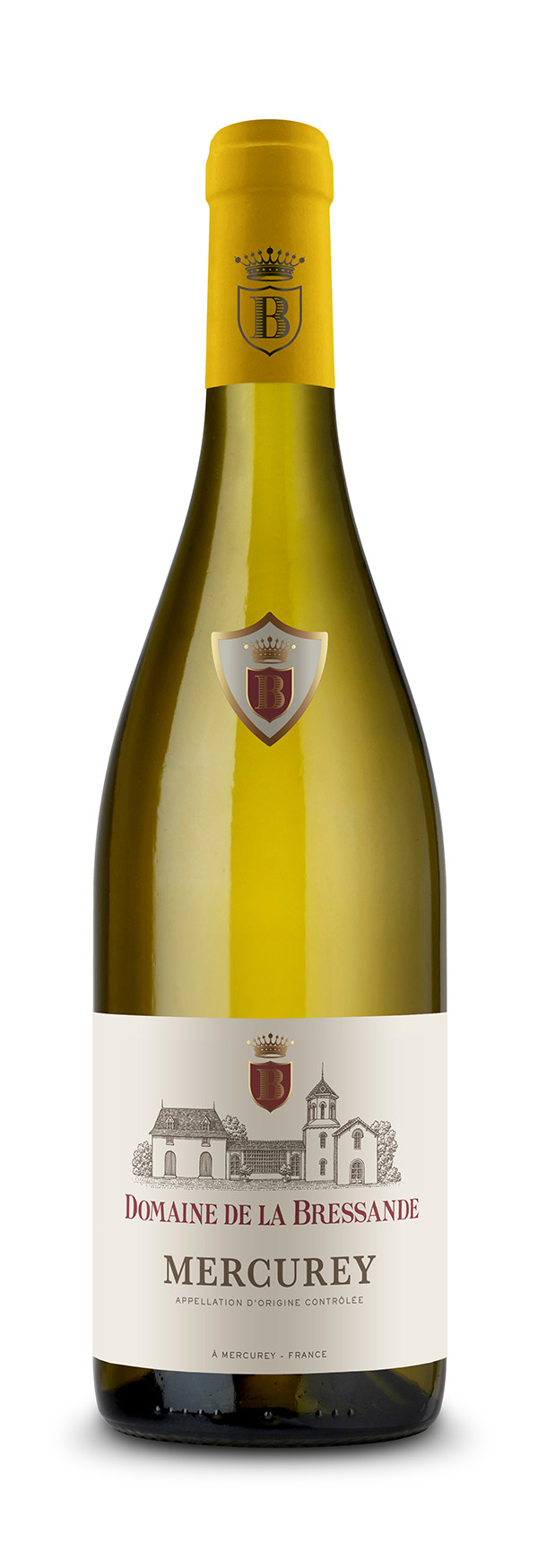MERCUREY 2021
Grape Variety
100% Chardonnay.
Tasting notes
Colour: bright golden yellow.
Nose: aromas of white flowers and notes of white pepper.
Palate: a floral attack with aromas of almond and pear. Beautiful structure and aromatic persistence.
Food and wine pairing
This wine goes well with fish or snails, in cream sauce, white meats in cream sauce, fine cheese.
Serving suggestions
Drink ideally at a temperature of about 12-14°C (54-57°F.).
Ageing potential
Already delicious, this great white Burgundy can age 5 years.
Origin
In 1923, the civil court of Chalon-sur-Saône instituted, by judgment, the appellation d’origine mercurey, allowing it to become one of the three oldest appellations of Burgundy.
In the Côte Chalonnaise, Mercurey has always enjoyed an excellent reputation.
This appellation has 31 climates classified in "premiers crus". Located to the north of the Côte Chalonnaise, more than 90% of the wine produced under the Mercurey name is red. A total of 543 hectares, of which 148 are Premiers Crus. As for the white wines, they represent 106 hectares, including 18 classified as Premiers Crus.
The village of Mercurey owes its name to the Romans who, during the occupation of the region, built a temple in homage to Mercury, God of commerce and finance.
The vineyard estate extends now over 21 hectares and offers 3 upper quality wines from the appellation of Mercurey. White wines: Mercurey (3 ha), red wines: Mercurey (7.50 ha) and Mercurey 1er Cru En Sazenay (1.75 ha).
Terroir
- Vineyard area: 3 Ha (7.41 acres).
- Vines age: around 21 years.
- Soil: Sol clay calcaire.
Vinification and maturing
Harvested on September 27th (hand-picked).
Pneumatic pressing followed by a cold settling between 12 and 24 hours, with the aim of eliminating the coarse bourbes (solid particles from the skin, stalks, skins, impurities that settle by sedimentation).
Alcoholic fermentation in thermo-regulated stainless steel vats for precise temperature control and homogeneity of the cuvée, followed by racking at the end of fermentation. Aging of the wines in 228 litre barrels (20% new barrels) on fine lees for 8 months.
Stirring: twice a month until malolactic fermentation (beginning of January) in order to develop complex aromas and preserve the purity of the fruit, to protect the wine from oxidation (barrel wall and bung hole) but also from reduction (accumulation of deposits, sometimes sulphurous, in the bottom of the barrel or vat), by putting the fine lees back into suspension.
Vintage : 2021
Nature certainly set a challenge for the winegrower and the winemaker with this vintage.
It began with very warm temperatures at the end of February which led to an early bud break.
The historic frost in April then destroyed young shoots that had emerged too early, significantly affecting the future harvest. Changing weather continued to characterize the vintage through to the harvests.
There were spells of rain from May to mid-August, obliging winegrowers to be constantly on the alert. The only periods of relative calm were during flowering, which took place in good conditions for the formation of the future fruit, and the véraison (colour change), which benefited from the return of the sun from mid-August.
The vagaries of the weather contributed to the development of outbreaks of disease, which were contained thanks to the tireless efforts of our winegrowers. In spite of this, considerable sacrifices had to be made to ensure a high level of quality, and rigorous sorting of the fruit in the vineyard and on arrival at the winery was necessary.
This vintage also required a major technical effort. The vinifications had to be carried out with meticulous attention and precision with a particular care over the extraction of colouring matter, the balance of the structure and the aromatic expression of the red wines, and of the freshness, balance of acidity and aromatic potential of the white wines.


